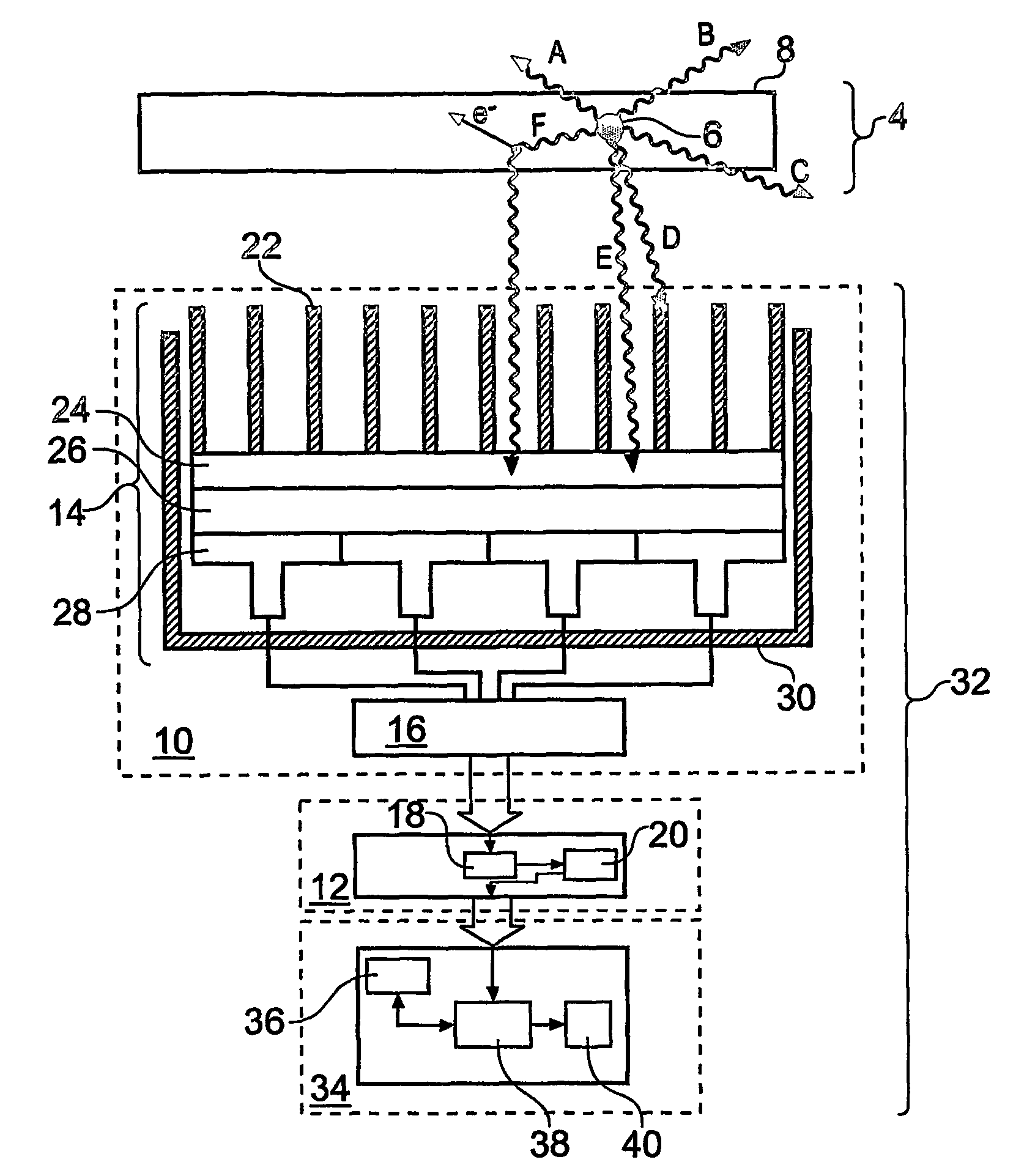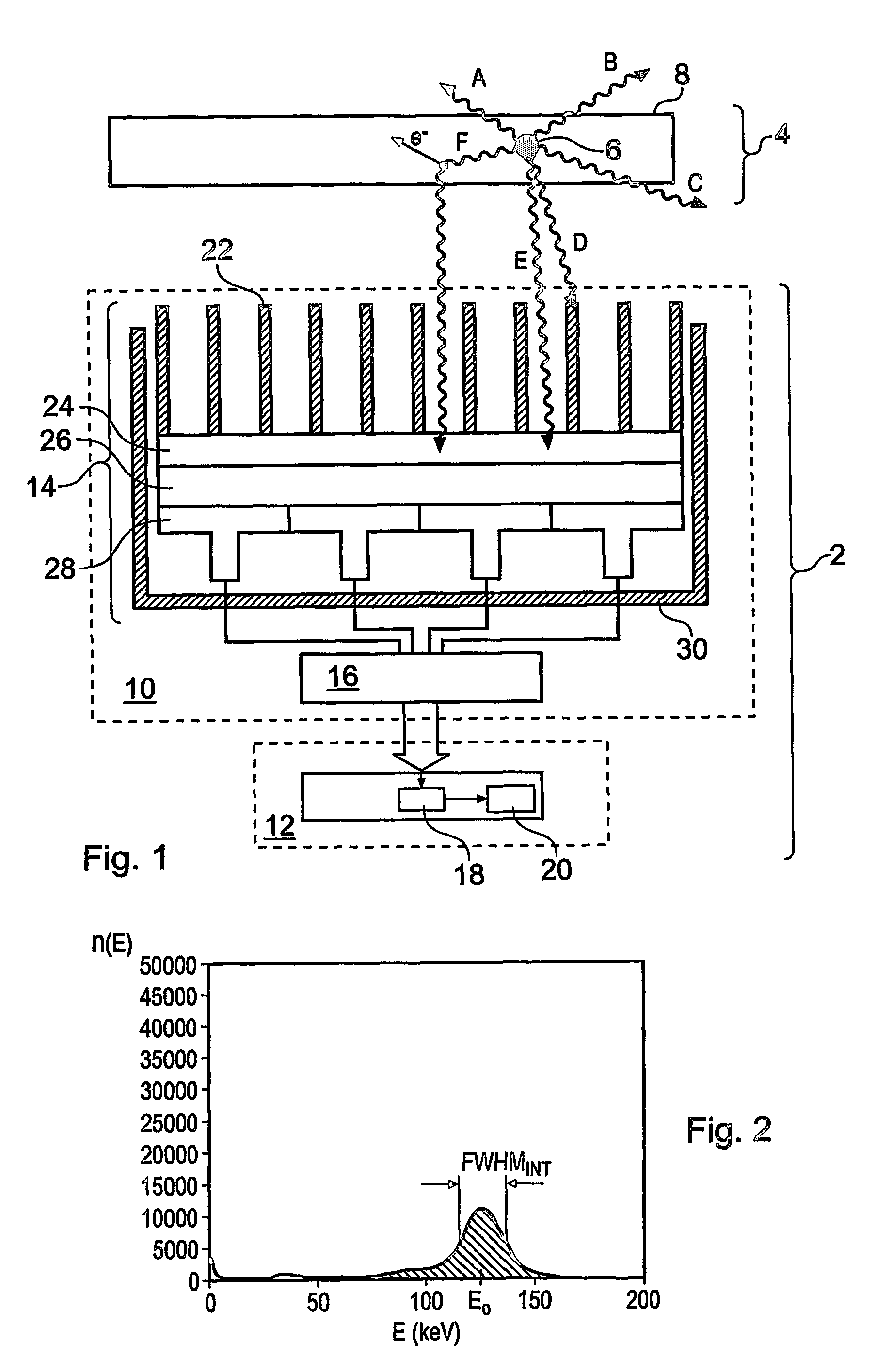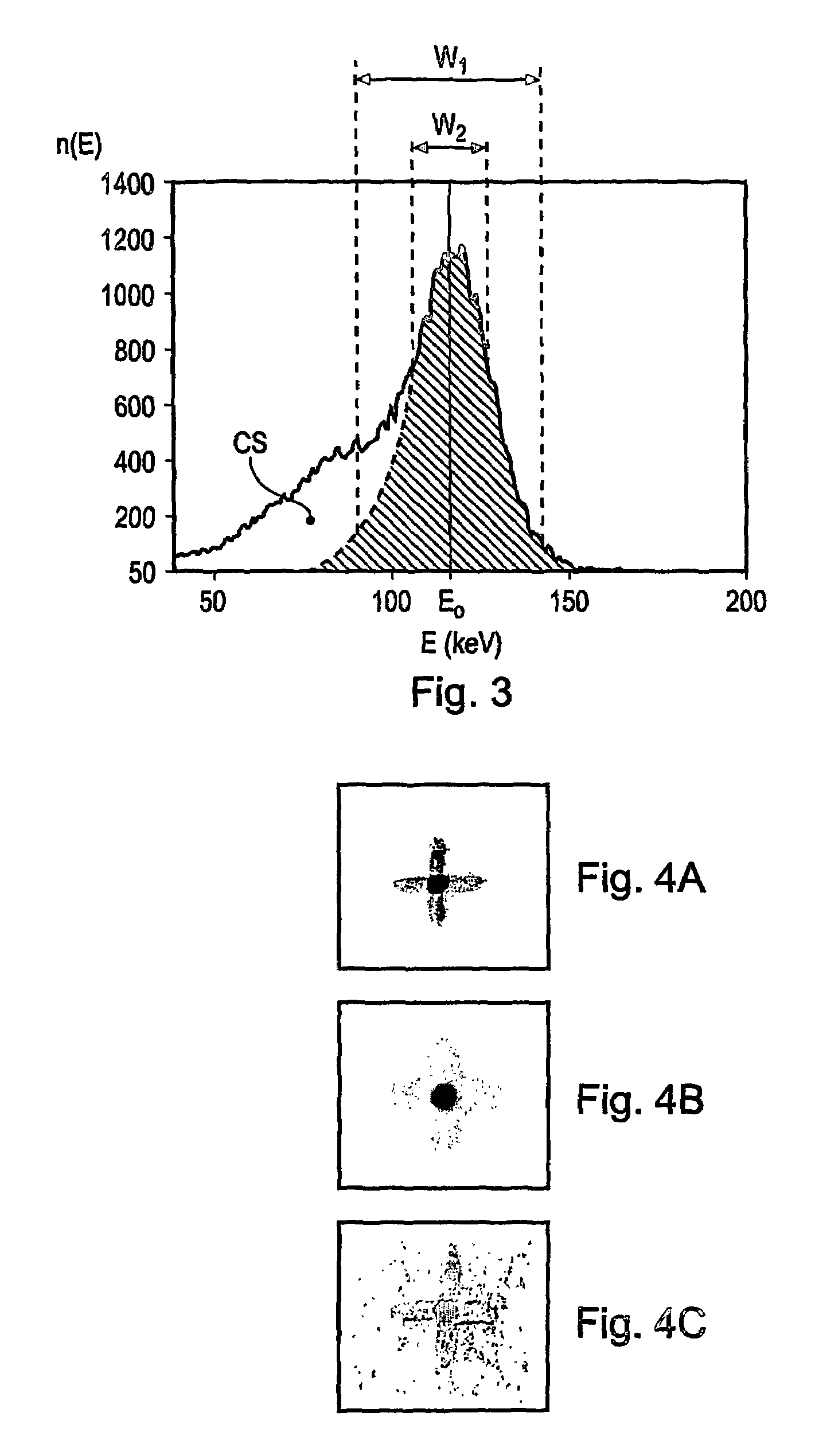Gamma-ray camera system
a camera system and gamma-ray technology, applied in the field of gamma-ray camera systems, can solve the problems of poor energy resolution, variance in the scintillation efficiency of the crystal itself, and worse resolution in the resulting image, and achieve the effect of higher energy resolution
- Summary
- Abstract
- Description
- Claims
- Application Information
AI Technical Summary
Benefits of technology
Problems solved by technology
Method used
Image
Examples
first embodiment
[0058]FIG. 5 schematically shows in vertical cross-section a gamma-ray camera system 32 according to the invention. Many of the features of the gamma-ray camera system 32 shown in FIG. 5 are similar to and will be understood from the correspondingly numbered features shown in FIG. 1 and described above. However, the gamma-ray camera system 32 additionally includes a spectra processing component 34. The spectra processing component includes a store of detector response functions 36, a spectra processor 38 and a data storage component 40. The functionality of the spectra processing component in this example is provided by a suitably configured general purpose computer. However, an application specific integrated circuit (ASIC), a field programmable gate array (FGPA) or a digital signal processor (DSP) may also be employed.
[0059]The spectra processing component 34 is arranged to read the observed data array I(X, Y, E) from the data storage component 20 in the energy spectra accumulatin...
second embodiment
[0072]FIG. 9 is a flow chart which schematically details some of the operational steps performed within a spectra processing component employed in a gamma-ray camera system of the invention. As above, the gamma-ray camera imager provides a square array of XTOT by YTOT detector pixels. At T1, the observed data array I(X, Y, E) corresponding to a prior observation is read from the data storage element 20 shown in FIG. 5. In this embodiment, the spectra processing component is configured to process the spectra associated with each detector pixel in parallel. A separate process thread operates for each individual detector pixel, this removes the need to iterate seen FIG. 8, and provides for significantly faster processing. In the first step of one process thread, labelled T2 in FIG. 9, the detector pixel corresponding to X=1 and Y=2 is selected. At the same time, threads corresponding to all other detector pixels are similarly instigated. In T3, the next step in the thread started at T...
PUM
 Login to View More
Login to View More Abstract
Description
Claims
Application Information
 Login to View More
Login to View More - R&D
- Intellectual Property
- Life Sciences
- Materials
- Tech Scout
- Unparalleled Data Quality
- Higher Quality Content
- 60% Fewer Hallucinations
Browse by: Latest US Patents, China's latest patents, Technical Efficacy Thesaurus, Application Domain, Technology Topic, Popular Technical Reports.
© 2025 PatSnap. All rights reserved.Legal|Privacy policy|Modern Slavery Act Transparency Statement|Sitemap|About US| Contact US: help@patsnap.com



